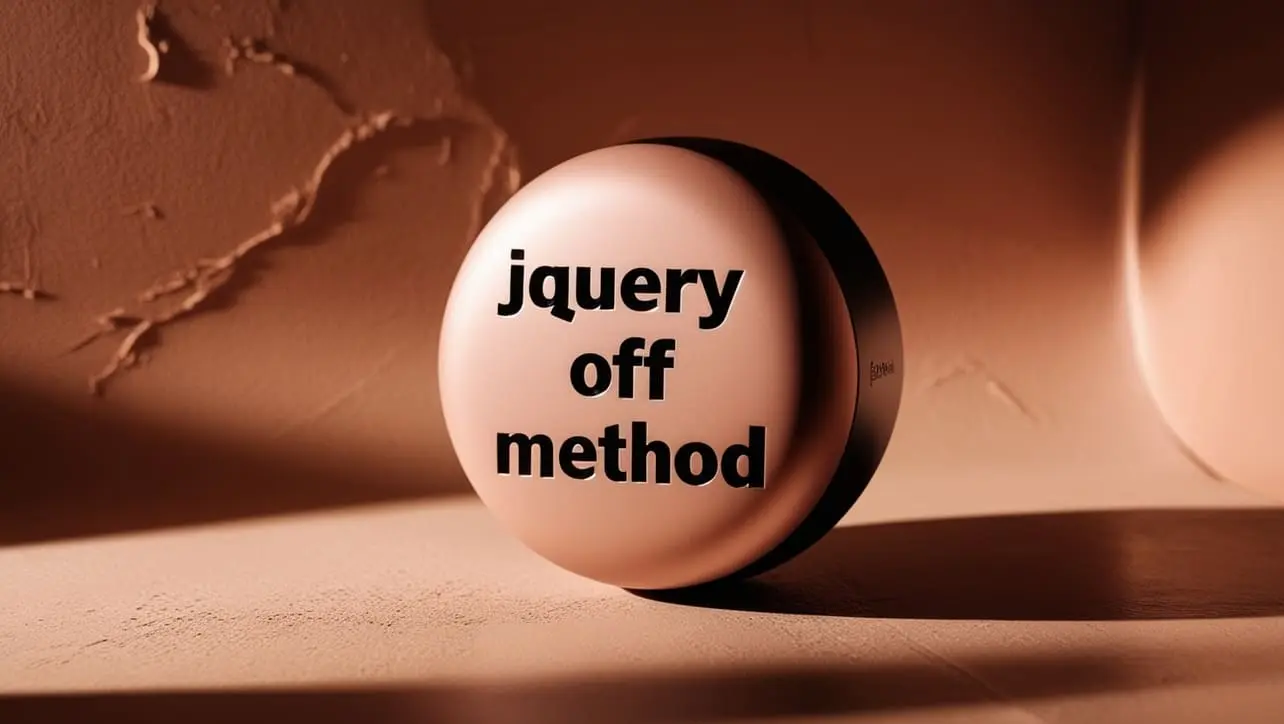
jQuery Topics
- jQuery Introduction
- jQuery Callbacks
- jQuery deferred
- jQuery selectors
- jQuery Ajax Events
- jQuery Ajax Methods
- jQuery Keyboard Events
- jQuery Keyboard Methods
- jQuery Form Events
- jQuery Form Methods
- jQuery Mouse Events
- jQuery Mouse Methods
- jQuery Event Properties
- jQuery Event Methods
- jQuery HTML
- jQuery CSS
- jQuery Fading
- jQuery Traversing
- jQuery Utilities
- jQuery Properties
jQuery .off() Method

Photo Credit to CodeToFun
🙋 Introduction
jQuery offers a myriad of methods to handle events and manipulate DOM elements efficiently. One such method is .off(), which allows you to remove event handlers previously attached using jQuery's .on() method. Understanding how to effectively utilize the .off() method can streamline your event management tasks and prevent memory leaks in your web applications.
In this guide, we'll explore the functionality of the jQuery .off() method with practical examples to demonstrate its versatility.
🧠 Understanding .off() Method
The .off() method in jQuery is used to remove event handlers that were attached using the .on() method. This is particularly useful when you need to deactivate event listeners or clean up after dynamically generated content.
💡 Syntax
The syntax for the .off() method is straightforward:
.off( [ events ] [, selector ] [, handler ] )Parameters:
- events (Optional): A string containing one or more space-separated JavaScript event types.
- selector (Optional): A string containing a selector expression to filter the descendants of the selected elements that trigger the event.
- handler (Optional): A function that is to be no longer executed.
📝 Example
Removing Event Handlers:
Suppose you have a button with a click event handler attached using the .on() method, and you want to remove this handler. You can achieve this with the
.off()method as follows:index.htmlCopied<button id="myButton">Click Me</button>example.jsCopied// Attach event handler $("#myButton").on("click", function() { console.log("Button clicked!"); }); // Remove event handler $("#myButton").off("click");After executing the above code, clicking the button will no longer trigger the event handler, and Button clicked! will not be logged to the console.
Removing Multiple Event Handlers:
You can also remove multiple event handlers at once by specifying multiple event types separated by spaces:
example.jsCopied$("#myElement").off("click mouseenter");This will remove both the click and mouseenter event handlers from the selected element.
Removing Delegated Event Handlers:
If event handlers were attached using event delegation, you can specify the selector to remove only those event handlers:
example.jsCopied$("#container").off("click", ".dynamicElement");This will remove click event handlers from elements with the class dynamicElement within the #container element.
Namespaced Events:
You can also remove event handlers with specific namespaces:
example.jsCopied$("#myElement").off("click.myNamespace");This will remove only event handlers with the namespace myNamespace.
🎉 Conclusion
The jQuery .off() method provides a convenient way to remove event handlers attached using the .on() method, allowing for efficient event management and preventing memory leaks. Whether you need to deactivate event listeners, clean up dynamically generated content, or remove specific event handlers, the .off() method offers a flexible solution.
By mastering its usage, you can ensure optimal performance and maintainability in your web applications.
👨💻 Join our Community:
Author

For over eight years, I worked as a full-stack web developer. Now, I have chosen my profession as a full-time blogger at codetofun.com.
Buy me a coffee to make codetofun.com free for everyone.
Buy me a Coffee












If you have any doubts regarding this article (jQuery .off() Method), please comment here. I will help you immediately.